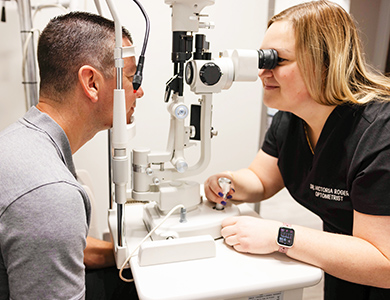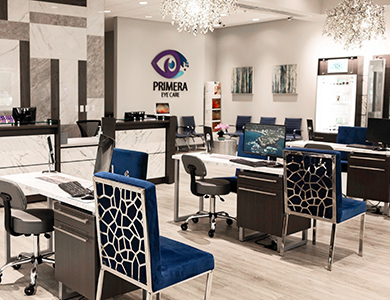
People with poor eyesight often have to give up many parts of their lives as their vision declines: driving, reading, writing, using a phone, and walking unimpaired, for example. But vision rehabilitation can help people with poor eyesight or low vision adapt to their condition and better navigate the world.
What Causes Low Vision and Poor Eyesight?
Low vision is generally described as any chronic visual impairment that can’t be corrected through the use of medication, surgery, or glasses. Impairment can sometimes be slowed, but lost vision cannot be regained. Some of the most common kinds of low vision include:
- Glaucoma
- Macular degeneration
- Diabetic retinopathy
If an impairment cannot be fixed or treated, vision rehabilitation can help.
What is Vision Rehabilitation?
Vision rehabilitation is a kind of training and therapy that specialists can offer people with low vision. Specialists typically start by analyzing and evaluating the patients’ current needs. Based on their level of impairment and the tasks they need help with, the specialist can create a plan of action.
What Do You Do in Vision Rehab?
Some of the areas that vision rehabilitationists focus on include training for vision and guidance about changing environments to work for the patient. Vision training helps people work with the level of eyesight they do have to complete their everyday tasks and obligations. For example, someone with macular degeneration can’t see details, but they can still utilize their “bigger picture” vision in day-to-day life.
Adapting and Changing Your Environment
In addition to vision training, specialists can help patients adapt to their low vision. They may recommend using more or less lighting to complete certain tasks, for example. Additionally, specialists may recommend devices that can help them enhance aspects of their vision.
What Kind of Doctors Perform Vision Rehab?
Not all eye doctors can perform vision rehabilitation, but many optometrists and ophthalmologists do. Low vision specialists and vision rehabilitation therapists also typically offer the service, and it is sometimes offered as a social service rather than a medical service. However, some insurance companies and state agencies might be able to cover the cost.
When to Start Vision Rehab
It’s best to start vision rehab as soon as possible in order to get the most benefit. The more vision you have left, the more you can slow the loss of more vision and take time to adapt to your new level of sight. If you’re concerned about changes in your sight, find a specialist as soon as possible.
Are you having difficulty seeing?
Contact us to schedule an appointment





